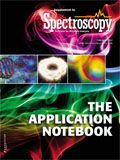Long-Wavelength Dispersive 1064 nm Raman: Counterfeit or Genuine Material Identification – Rum, Shampoo, et al.
Increased capability for identifying genuine versus counterfeit materials is achieved by using dispersive 1064 nm Raman analyzers.
Claire Dentinger, Steven Pullins, and Eric Bergles, BaySpec, Inc.
Increased capability for identifying genuine versus counterfeit materials is achieved by using dispersive 1064 nm Raman analyzers.
Counterfeiting is a growing problem that reaches to all different types of consumer and non-consumer products. This can result in significant loss of revenue for manufactures of genuine products and ill effects for consumers. Counterfeit products are made with similar physical characteristics to the genuine product making it difficult to distinguish between the two. However if the chemical characteristics of the counterfeit and genuine product are different then they will behave differently when used, sometimes with disastrous effects.
Raman spectroscopy is a powerful technique for chemical identification. The nondestructive Raman analysis produces chemically specific spectra and enables accurate identification. Two examples of counterfeiting are shown, methanol in drinking alcohol and counterfeit shampoo. Alcohol produced for human consumption should contain only ethanol; however there have been problems with drinking alcohol containing methanol, which can cause a variety of health problems including death. Some drinking alcohols and many shampoos are colored. Often colored materials show significant fluorescence when Raman spectrometers with 532 nm or 785 nm excitation are used. This fluorescence reduces the signal to the background noise ratio, can significantly increase the acquisition time, and reduces the number of peaks available for chemical identification.
New lasers, optics, and detector technology originally developed for the telecommunications industry has allowed BaySpec, Inc. to develop multiple hand-held and laboratory Raman analyzers including systems with 1064 nm excitation. The long excitation wavelength enables significant reduction in fluorescence while the small size and dispersive grating, with no moving parts; improve reliability for on-site and laboratory chemical identification.

Figure 1: 1064 nm Raman spectra showing the difference between rum with and without methanol.
Figure 1 shows 1064 nm Raman spectra of ethanol, methanol, pure rum and rum to which methanol was added. The figure shows that pure ethanol and methanol have quite different Raman spectra. This makes it easy to tell the difference between the rum that contains only ethanol and that which also contains methanol. Figure 2 shows the Raman spectra collected from both genuine and counterfeit shampoo samples, 1064 nm laser excitation was used to collect these spectra. When 785 nm or 532 nm excitation was used with these samples a large fluorescence band is seen which obscures all but the strongest Raman bands. However, when the 1064 nm excitation was used, very clear Raman bands are seen and these bands allow for a clear distinction between genuine and counterfeit shampoos.

Figure 2: Raman spectra of genuine and counterfeit shampoos measured with 1064 nm excitation.
BaySpec, Inc.
1101 McKay Drive, San Jose, CA 95131
tel. (408) 512-5928
Website: www.bayspec.com

A Seamless Trace Elemental Analysis Prescription for Quality Pharmaceuticals
March 31st 2025Quality assurance and quality control (QA/QC) are essential in pharmaceutical manufacturing to ensure compliance with standards like United States Pharmacopoeia <232> and ICH Q3D, as well as FDA regulations. Reliable and user-friendly testing solutions help QA/QC labs deliver precise trace elemental analyses while meeting throughput demands and data security requirements.